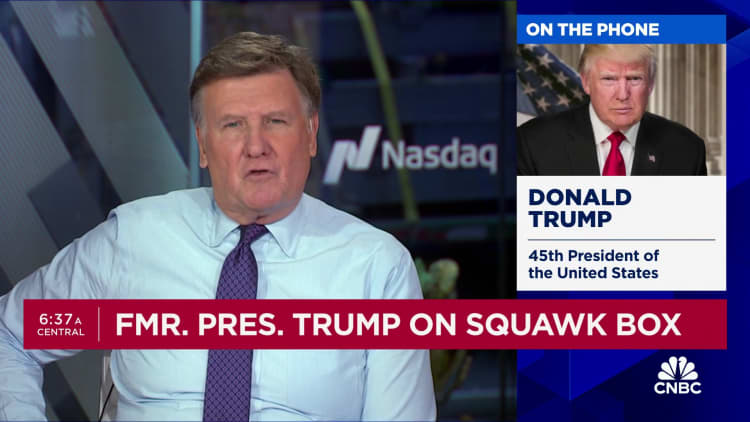Soon after the House approved a long-stalled aid package, U.S. arms shipments could begin flowing again to Ukraine, U.S. officials say, with goods from Pentagon stockpiles in Germany being quickly shipped by rail to the Ukrainian border.
The measure would bring about $60 billion to Ukraine’s war effort. A significant amount will be allocated to replenish U.S. defense supplies, and billions more would be used to purchase U.S. defense systems, which Ukrainian officials say are urgently needed.
The Senate was expected to pass the bill, and President Biden has said he would sign it into law.
Ukrainian military officials have been complaining for months that political paralysis in the US Congress has led to critical ammunition shortages in the war against Russia. Ukrainian troops at the front have had to ration their shells and morale has suffered.
U.S. officials have not specifically said what weapons the United States will send to Kyiv as part of the package, but Maj. Gen. Patrick Ryder, the Pentagon press secretary, told reporters Thursday that more air defense and artillery munitions will likely be included.
“We have a very robust logistics network that allows us to move material very quickly, as we have in the past,” said General Ryder.
“We can move within a few days,” he added.
Transfers from the United States by cargo aircraft and ocean vessels are typically organized by the U.S. Transportation Command headquarters in rural Illinois, which maintains extensive databases of cargo ports, railroads, and roads that can be used by military and civilian transport vehicles around the world.
Weapons and ammunition sent to Ukraine often come from Pentagon assets in Europe, with deliveries coordinated by an organization called Security Assistance Group-Ukraine, founded in late 2022 and based in Germany and within the European Command of the Pentagon’s operations. It employs around 300 people.
Military leaders have sent Ukraine 55 aid packages of weapons, so-called PDAs, since August 2021 – for the president’s withdrawal authority – containing a mix of vehicles, ammunition, drones and other items worth at least $26.3 billion.
Aid packages, which often came twice a month after Russia’s all-out invasion of Ukraine in February 2022, fell sharply last fall as some Republicans bitterly opposed sending more aid to the country.
The latest aid package announced on March 12 included Stinger anti-aircraft missiles, guided missiles for HIMARS launchers, small anti-tank missiles and 155-millimeter artillery ammunition including cluster munitions.
General Ryder was asked about a non-binding measure in House legislation to send weapons to Kyiv called ATACMS, which have been the Pentagon’s longest-range ground-launched guided missiles since the late 1980s.
The Biden administration agreed to deploy a small number of these missiles last year, and Ukrainian forces used them to attack two air bases in Russian-occupied territory in October. According to Ukraine’s special forces, the attack damaged runways and destroyed nine Russian helicopters, among other things.
“As you know, of course, we have always said that nothing is off the table,” the general said of possible new provisions of ATACMS. “But I have nothing to announce today.”
The United States has a limited number of these weapons, and officials said the rest of its ATACMS arsenal is reserved for contingency plans should the United States go to war with Russia, North Korea or China.
Officials have also signaled that additional ATACMS could be made available to Ukraine once the replacement weapons, called precision strike missiles, enter the Pentagon’s inventory.
On Wednesday, a spokesman for Lockheed Martin, the manufacturer of both missiles, said the company delivered the first four operational Precision Strike Missiles to the U.S. Army last year. A $220 million contract signed in March will provide more money to the U.S. Army, although it was not immediately clear how many it would buy.
The exact number of weapons that the Pentagon sent from its stocks to Kiev is also unclear.
The last time the Defense Ministry updated the number of 155-millimeter artillery shells delivered to Ukraine was in May, when it said more than two million such projectiles had been sent so far. Each of the 17 aid packages announced for Ukraine since then included 155-millimeter ammunition.
But supplying more weapons to Ukraine depends on more than just political will. The United States also needed to speed up production of the munitions that Ukraine needs most to meet its needs.
In the United States, artillery ammunition takes several weeks to produce as heavy steel rods are forged into empty projectiles in Scranton, Pennsylvania, then shipped to rural Iowa, where they are filled with explosives and prepared for shipping.
General Dynamics, operator of the Pennsylvania factory, is opening a new factory outside Dallas to make metal grenade bodies to increase the total number of finished grenades. The Army says it is making about 30,000 high-explosive shells each month, up from about 14,000 a month before Russia’s full-scale invasion of Ukraine.
The army’s goal is to produce 100,000 155-millimeter artillery shells per month by 2025.
The United States is not the only one providing military aid to Kiev.
Since April 2022, Defense Secretary Lloyd J. Austin III has convened Ukraine Defense Contact Group meetings approximately every month. Participants included NATO nations, several of the United States’ key non-NATO allies, and at least two South American nations that had previously purchased weapons from the Soviet Union and Russia.
The group requests inquiries directly from Ukraine’s military and civilian leadership.
After a virtual meeting of NATO defense ministers on Friday, Jens Stoltenberg, the alliance’s secretary general, said Germany would deliver an additional Patriot air defense missile system to Ukraine, along with about $4.3 billion in military support from the Netherlands and others Aid provided by NATO members.
“Ukraine is using the weapons we provide to destroy Russian combat capabilities,” Stoltenberg said in a statement. “It makes us all safer.”
“So support for Ukraine is not charity,” he added. “It’s an investment in our security.”
Robert Jimison and Helene Cooper contributed reporting.
Source link
2024-04-20 18:33:01
www.nytimes.com








